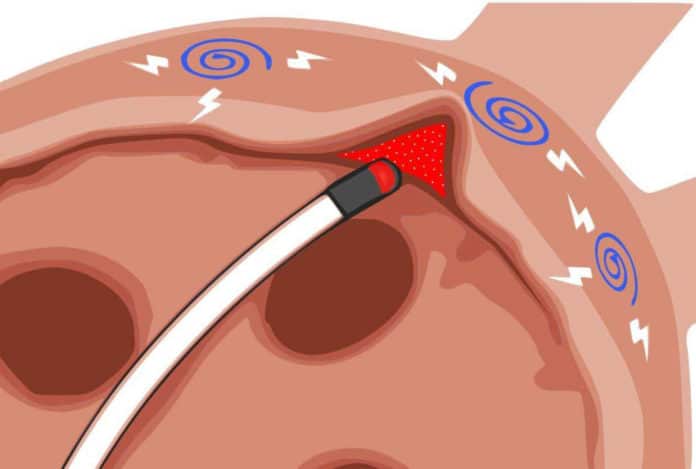The mechanisms of atrial fibrillation (AF) are poorly understood, resulting in disappointing success rates of ablative treatment. Different mechanisms defined broadly by different atrial activation patterns have been proposed and, arguably, this dispute has slowed the progress of AF research.
A new study represents a percolation inspired computational model showing the spontaneous emergence of AF that actively supports and gives a theoretical explanation for the clinically observed diversity of activation. Using the model, scientists modeled the movement of electrical signals inside and outside of the heart. The study has offered the reason why corrective surgery is not currently always beneficial.
Moreover, the study could potentially improve surgery for some, by better targeting areas of the heart responsible. It could also avoid unnecessary surgery for others, where intervention is unlikely to help.
This newly developed model, in real, explains how different patterns of electrical pulses on the inside and the outside the heart arise and what causes them. For example, the model predicts that the current method of burning the heart from the inside might fail if the sources underlying AF originate on the outside of the heart.
Based on the predictions, surgeons could decide beneficiary treatments.
It also predicts that for some patients, the heart muscle is so damaged that regardless of how often the source of AF is destroyed, a new location will always emerge that disrupts the regular rhythm.
For these patients, surgery is likely to be an unnecessary risk, as well as being costly for the healthcare system. The team says new treatments should be developed for these patients.
Lead author Max Falkenberg, a Ph.D. student in the Department of Physics at Imperial, said: “Our model helps explain why many patients have unsuccessful surgery, and associates this failure with several risk factors such as obesity. We hope that with further development, the model could help us determine for which patients surgery is an unnecessary risk, and which would benefit from surgery if the right regions of the heart are targeted.”
Professor Kim Christensen, who supervised the project, said: “Atrial fibrillation is a fascinating example of how a complex natural phenomenon might have a relatively simple origin. A long-standing collaboration between physicists and cardiologists at Imperial has managed to overcome persistent barriers to bridging the disciplines, and we are now reaping the fruits of that endeavor.“
“We are truly excited about the future potential clinical applications of our findings for the personalized treatment of atrial fibrillation.”
